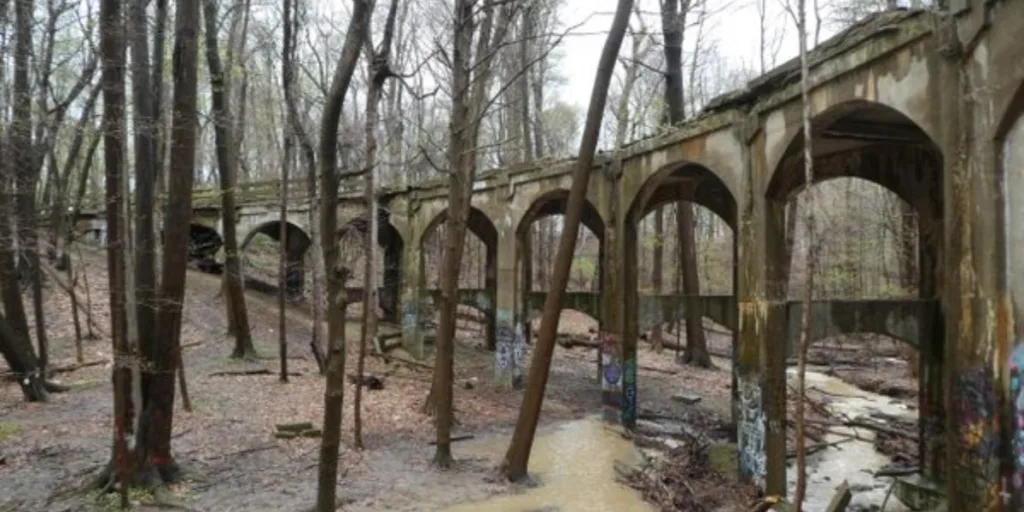North Dakota’s landscapes, with their expansive plains and rough badlands, have remnants of the past. Among these are the ruins of once-bustling towns and buildings that have been left to the elements.
These locations, preserved in time, provide a hauntingly lovely window into the past and the fleeting nature of human achievements.
Here, we look at five such deserted locations in North Dakota, each with a unique tale of heydays past and the unavoidable decline into loneliness and quiet.
Ambrose Ghost Town
Ambrose was built out by the Soo Railway in 1906. The city bears the name of a railroad worker. This well-known ghost town has been the subject of numerous media stories for a number of reasons, chief among them being its fast diminishing population.
There were thirty people living in Ambrose as of July 1, 2021. Ambrose’s Population Density and Diversity Index puts it in the lowest percentile among North Dakota’s cities, towns, and Census Designated Places (CDPs).
Ambrose is a rather large near-ghost town in North Dakota, covering an area of roughly twenty square blocks.
San Haven Sanitorium
Northeast of Dunseith is the little town of San Haven. Originally built in 1909 as a tuberculosis sanitarium, it later became a center for people with developmental disabilities.

With time, San Haven became an enormous complex of buildings connected by subterranean tunnels. It had its own zip code because of how big it was. In the past, San Haven hosted close to 900 patients.
San Haven is now more well-known for being an abandoned location in North Dakota than for being open to the general public.
Not very long ago, a trespasser fell down an elevator shaft and perished. According to Mariah Masilko, a site visitor, the official designation was “Sanatorium” instead of “Sanitarium,” as stated in the WPA Guide to 1930s North Dakota.
Read More: Eerie Echoes: Discovering the Past in Nevada’s Abandoned Sites
Alkabo Ghost Town
Alkabo is unquestionably one of the most fascinating outlying settlements, living up to its inclusion on the North Dakota list of abandoned locations.
The terms “alkali” and “gumbo,” which describe two different kinds of soil that are found in the region, are combined to form the name. Situated approximately six miles from Montana and eight miles from Canada, this town is the furthest northern in all of North Dakota.
Alkabo is a small town with a population of only 19 in 1976. The school is situated at the top of a hill. A museum housed in the former Alkabo School is accessible by appointment only.
The people of Alkabo who are still alive reside on the west side of the town, but most of the structures east of Main Street have been abandoned. The town is still crossed by the railroad that gave rise to Alkabo, but the depot and train stops are gone.
Read More: Forgotten Oasis: Haunting Beauty of These 5 Abandoned Places in Arizona
Arena Ghost Town
The town was constructed in 1906 by the Minnesota-based Patterson Land Company, which had acquired over a million acres of railroad land between Bismarck and Jamestown in 1905. Harry A. Mutchler was appointed postmaster of the newly established rural post office on January 23, 1906.

By 1930, Arena was experiencing the Great Depression along with much of the nation. Throughout that decade, the Dust Bowl had a far greater impact. The farmers left the area, forcing businesses to close. By 1935, there were just thirty-five residents.
The school was closed in 1961, and the kids were transported by bus to Wing, North Dakota. When it became dangerous while empty, it was destroyed in the 1990s. The post office in Arena was shut down on September 23, 1996, and is now well-known as an abandoned location in North Dakota.
Read More: Virginia’s Untold Tales: 5 Fascinating Abandoned Places to Discover
Knife River Indian Villages
In order to preserve the historical and archeological artifacts of the Hidatsa, a group of Northern Plains Indians, Knife River Indian Villages National Historic Site was established in North Dakota in 1974.
A tributary of the Missouri River is the Knife River. The Missouri River is dubbed the “Big Muddy” because to its massive sedimentation loads. The Missouri River drains around one-sixth of the United States surface.
The most well-known abandoned location in North Dakota is the Knife River Settlement, where Sakakawea (Sacagawea) resided. Up until 1837, the Knife River villages prospered, losing half of their population due to a series of smallpox outbreaks that almost completely destroyed them.
Read More: Ruins and Relics: 5 Abandoned Places to Discover in North Carolina
To Conclude
The state’s rich and occasionally brutal past can be seen in North Dakota’s abandoned sites. These places whisper tales of the past, from boomtowns centered around the railroad to hospitals caring for hordes of sick.
Discovering these deserted locations may be a sobering experience that serves as a reminder of the transience of human activities.
Thus, if you happen to find yourself exploring the wide plains of North Dakota, make sure to look out for these historical artifacts. When visiting these deserted locations, just remember to exercise caution and respect.




